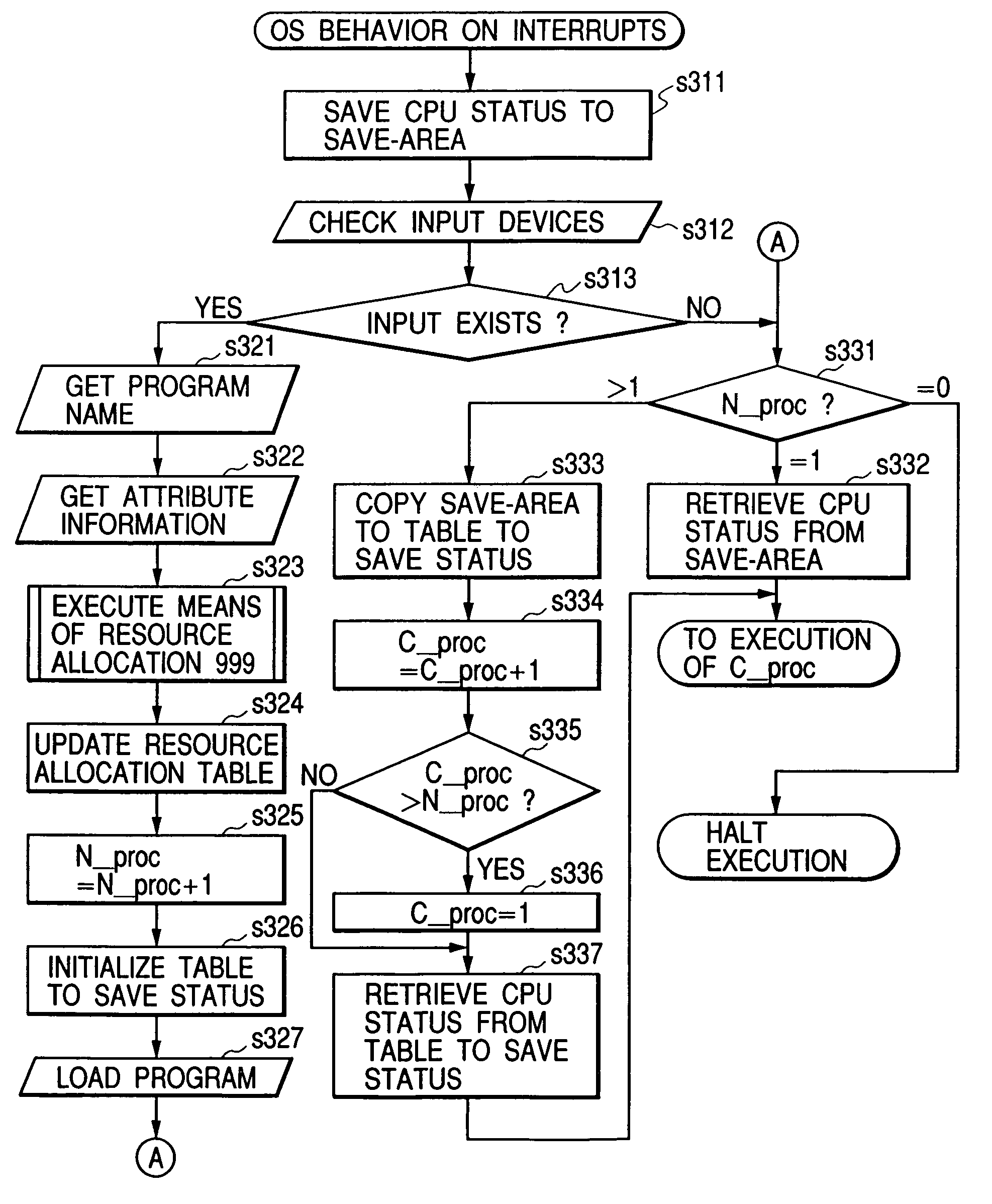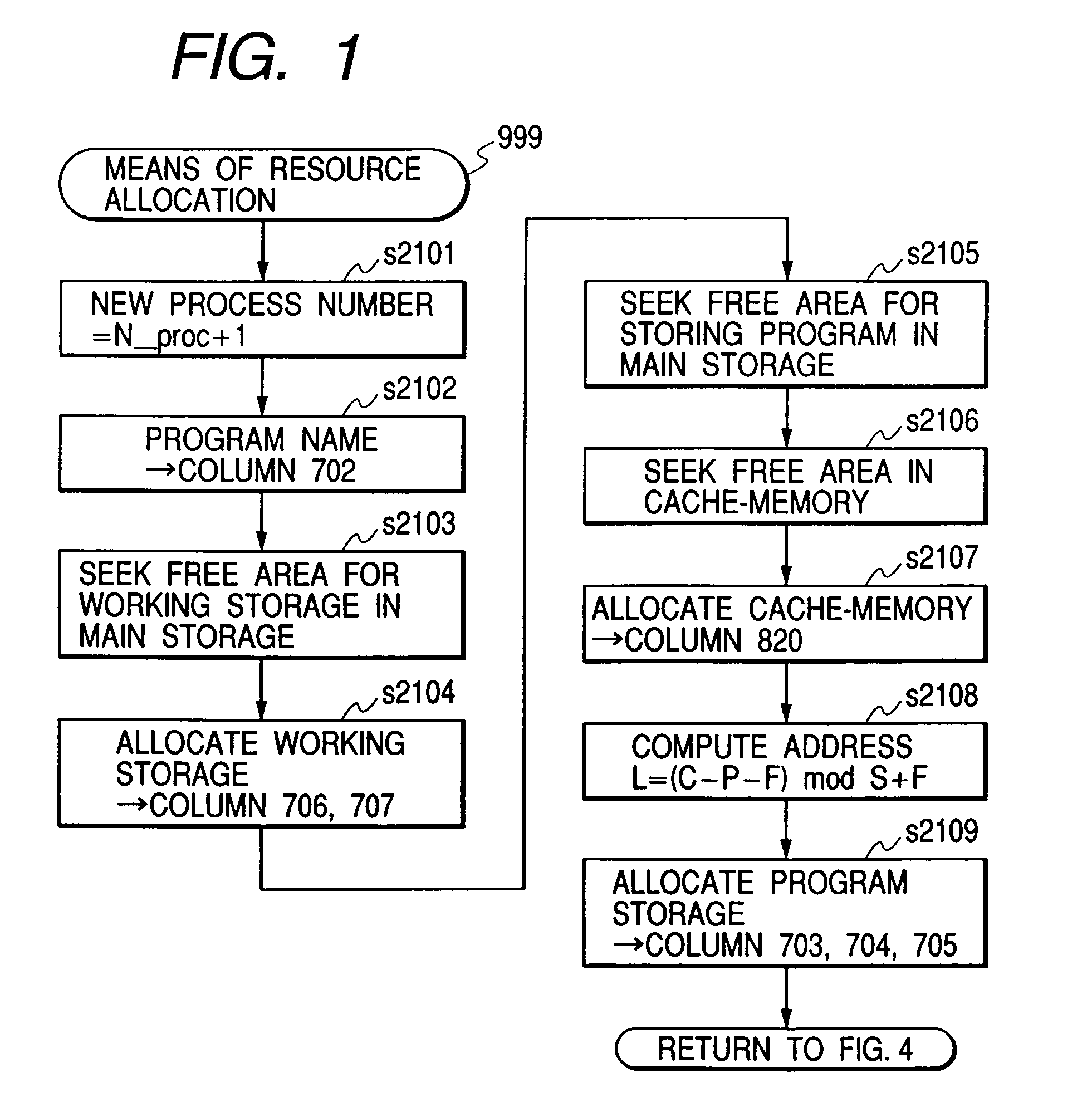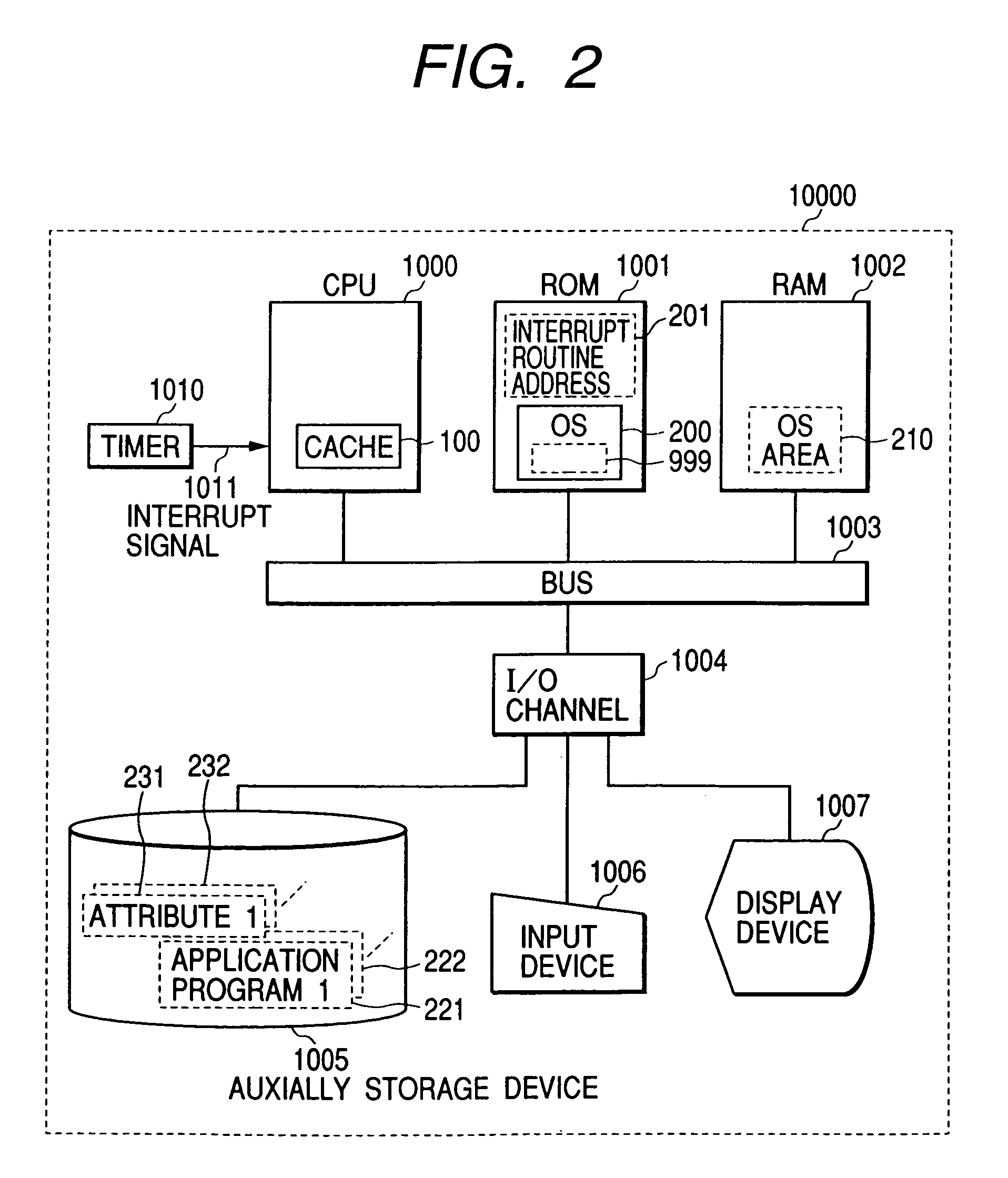Cache memory allocation method
a memory allocation and cache technology, applied in memory allocation/allocation/relocation, data processing applications, multi-programming arrangements, etc., can solve the problems of ineffective cache memory, adverse effect of cache memory operation taking, and ineffective cache memory
- Summary
- Abstract
- Description
- Claims
- Application Information
AI Technical Summary
Benefits of technology
Problems solved by technology
Method used
Image
Examples
first embodiment
[0090]As the present invention, the “direct mapping” configuration of cache memory shown in FIG. 5 will first be discussed.
[0091]In this configuration, in order to prevent thrashing, it is advisable to position multiple concurrent processes on the main storage such that the principal parts of the processes do not use any same address on the cache memory. To do this, the following should be carried out: obtain the positions of the principal parts within the application programs from the attribute information 231, 232, and so on of the programs; determine the main storage addresses where the processes (programs) are to be loaded such that the corresponding cache addresses for storing the principal parts, which are determined by using the equation 1, differ from each other.
[0092]In this case, the required attribute information is provided in form shown in FIG. 11-a. That is, the attribute information 231 is recorded in this form, containing: program name 900, program size 901, entry ad...
second embodiment
[0107]Then, the present invention will be explained below with reference to hardware configuration shown in FIG. 6. FIG. 6 shows an example of cache memory configuration based on a scheme called an “application space sharing scheme,” which is a modification to the cache memory configuration shown in FIG. 5.
[0108]The components of the cache memory system in FIG. 6 and their operation are the same as those of the system in FIG. 5, but the difference between both lies in the way of generating an entry address. The system in FIG. 5 uses the 2nd to 12th bits of the value of the PC to generate an entry address, whereas the system in FIG. 6 uses the upper LL two bits (the 23rd and 24th bits) as is for the corresponding upper two bits of an entry address. Due to this, the bit positions from where the values are retrieved change, that is, the 11th to 22nd bits (12 bits in total) of the PC, are used, though the number of bits of the tag 112 is unchanged. In the second embodiment, entry addres...
third embodiment
[0133]Furthermore, the present invention will be explained below with reference to hardware configuration shown in FIG. 7. FIG. 7 shows an example of cache memory configuration based on a scheme called a “cache page register scheme,” which is a modification to the cache memory configuration shown in FIG. 5.
[0134]The components of the cache memory system in FIG. 7 and their operation are the same as those of the system in FIG. 5, but the difference between both lies in the way of generating an entry address. The system in FIG. 5 uses the 2nd to 12th bits of the value of the PC to generate an entry address, whereas the system in FIG. 7 is provided with a two-bit cache page register 160 and the contents of this register are used as upper two bits of an entry address. The contents of the cache page register are to be software updated by a suitable CPU instruction. Due to this, the tag 112 has additional two bits and the 11th to 24th bits of the PC (14 bits in total) are used.
[0135]In th...
PUM
 Login to View More
Login to View More Abstract
Description
Claims
Application Information
 Login to View More
Login to View More - R&D
- Intellectual Property
- Life Sciences
- Materials
- Tech Scout
- Unparalleled Data Quality
- Higher Quality Content
- 60% Fewer Hallucinations
Browse by: Latest US Patents, China's latest patents, Technical Efficacy Thesaurus, Application Domain, Technology Topic, Popular Technical Reports.
© 2025 PatSnap. All rights reserved.Legal|Privacy policy|Modern Slavery Act Transparency Statement|Sitemap|About US| Contact US: help@patsnap.com



